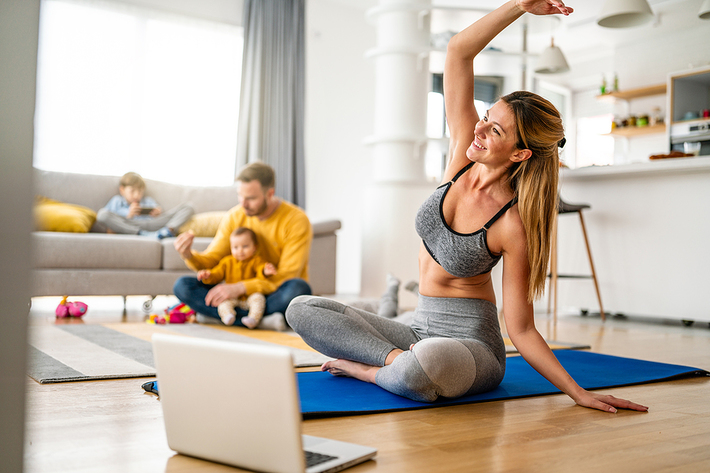While we often talk about the changing fitness industry in response to Covid-19, we don’t always drill down to specifics. Business Insider recently identified several ways the pandemic transformed the fitness space. This piece takes a closer look at their six findings, along with what they mean for fitness business owners.
1. There’s a fitness equipment shortage.
When we think of COVID-related shortages, we think of toilet paper and hand sanitizer. Also, making the list, however? Dumbbells. With more people working out at home, these free weights have been in great demand. A supply chain breakdown from China has further complicated the issue. Peloton has also seen significant growth with more Americans taking to stationary bikes from the comfort — and safety — of their own living rooms.
In addition to dumbbells, the use of other types of at-home fitness equipment — such as rowing machines and treadmills — has also surged with more people opting to work out at home.
2. Bikes are having a major moment.
Stationary bikes aren’t the only bikes that have increased in popularity during COVID-19. As people have found themselves with more time on their hands and looking to spend more time outdoors, some bike shops have reported nearly 600 percent increases in sales. If you were looking to get your hands — or feet, as the case may be — on a new bike during the early days of the pandemic, you may have found yourself out of luck.
3. Gyms have implemented strict new safety protocols.
While many gyms have opened their doors, it’s anything but “business as usual.” In order to prevent the spread of the virus, fitness businesses have adopted heightened safety protocols, including social distancing, mandated masks, limiting capacity, and taking the temperature of gym-goers. While these precautions may not be ideal for gyms or for their members, they’ve been essential to supporting gyms in reopening their doors.
4. Fitness app use is on the rise.
Health and fitness apps have seen a significant increase in downloads since the onset of the pandemic — up a record 47 percent. Experts attribute this phenomenon to the fact that more people are home with the chance to make healthy lifestyle and exercise changes. COVID-19 represents yet another reason to get fit as a stronger immune system can be an invaluable defense against coronavirus complications.
5. People are embracing virtual classes.
While working out at home in front of the television might have been a popular pastime during the era of Jane Fonda and aerobicizing, the majority of gym members preferred to take their classes at the gym. With classes canceled or limited in capacity, gyms have started streaming virtual classes for eager members.

But virtual classes aren’t the only way gyms have gotten creative. They’ve also taken to the great outdoors to offer everything from outdoor bootcamps to body sculpting classes.
6. Athleisure sales are booming.
Remote work has come with a happy advantage for many workers: no need to dress for the office. As a result, many Americans have traded out their suits and khakis for yoga pants and sports bras. In the quest to be comfortable, 20 percent of American adults have bought athletic and athleisure apparel since the start of COVID.
Unfortunately, COVID was largely unanticipated, as were its catastrophic impacts. While fitness businesses have been among those hardest hit by the pandemic, they’ve also demonstrated their resilience by adapting in innovative and exciting ways. Some of these changes are so successful that they may remain part of the permanent face of fitness — long after the COVID crisis resolves.
One trend that’s definitely here to stay? Wearables. Request a demo today to learn more about what fitness monitoring technology can do for your fitness business.
{{cta(‘076cdea6-f043-402f-8763-024941fb7bd0’)}}